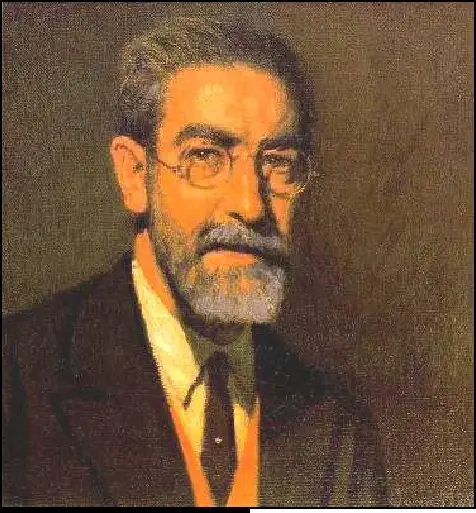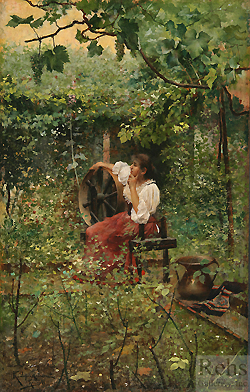BIOGRAPHY - Ricardo López Cabrera (1866 - 1950)

Ricardo López Cabrera was born in 1864 in Cantillana, about twenty miles northeast of Seville in southern Spain. After his primary education, he moved to Seville to study at the Saint Isabel of Hungary Royal Academy of Fine Arts under the tutelage of Eduardo Cano de la Peña. In 1887, the provincial government awarded him funds to study in Rome. There, he spent the next four years following the academic tradition, resulting in works like The Victorious Gladiator (now at the Museo de Bellas Artes in Seville). After returning home, he would fall under the wing of the elder painter José Jiménez Aranda, who mainly created genre paintings and was also associated with the Alcalá de Guadaíra group of landscape painters led by Emilio Sánchez Perrier. López Cabrera would later marry Jiménez Aranda’s daughter Rosario. At first, López Cabrera mainly exhibited at private showings and salons rather than exhibitions and competitions. However, he later submitted his work for exhibition at the 1892 Exhibición Histórica and the 1893 World’s Fair in Chicago. By then, likely because of Jiménez Aranda’s influence, he had mainly moved on to landscape and genre painting.
López Cabrera returned to his studies in Seville, and by 1906, he was appointed as an academician there, serving mainly as a drawing instructor. However, after only a few years, he abandoned this post for better prospects by moving to Argentina. There, he found success as a portraitist but also taught as a professor of still-life painting at the Provincial Academy of Fine Arts in Córdoba. Some posit that he was one of the first art teachers in Argentina to use more advanced impressionist techniques in his classes. His use of impressionist color theory would later influence successive generations of colorist painters in South America. However, he does not often receive this recognition, mainly because he spent a relatively short portion of his artistic career in Córdoba. After fourteen years, López Cabrera would return to Spain in 1923. Following his return to his home country, he would embark on one of the more ambitious projects of his career: a series of fifteen triptychs displaying Spain’s regional cultures. This was undoubtedly inspired by the work of his contemporary Joaquín Sorolla, whose series Vision of Spain is now a part of the collection of New York’s Hispanic Society of America. He created all fifteen triptychs without professional models or reference photographs.
Ricardo López Cabrera painted less and less frequently in his later years, mainly because of senility due to dementia. However, what paintings he did create were mainly landscapes showing the Guadaíra River just outside of Seville. Ricardo López Cabrera passed away in 1950 at the age of 84. His son José became an esteemed art critic under the name Bernardino de Pantorba, writing many books on Spanish art, including his father's biography.

